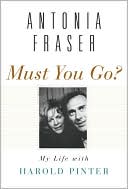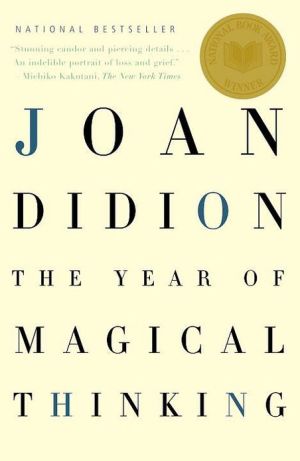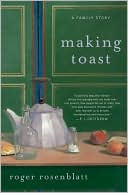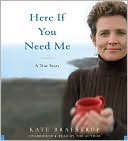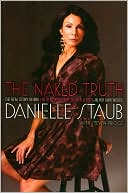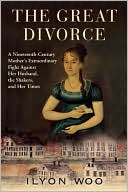Committed: A Skeptic Makes Peace with Marriage
The #1 New York Times bestselling follow-up to Eat, Pray, Love—an intimate and erudite celebration of love.\ At the end of her memoir Eat, Pray, Love, Elizabeth Gilbert fell in love with Felipe, a Brazilian living in Indonesia. The couple swore eternal love, but also swore (as skittish divorce survivors) never to marry. However, providence intervened in the form of a U.S. government ultimatum: get married, or Felipe could never enter America again. Told with Gilbert's trademark humor and...
Search in google:
At the end of her bestselling memoir Eat, Pray, Love, Elizabeth Gilbert fell in love with Felipe, a Brazilian-born man of Australian citizenship who'd been living in Indonesia when they met. Resettling in America, the couple swore eternal fidelity to each other, but also swore to never, ever, under any circumstances get legally married. (Both were survivors of previous horrific divorces. Enough said.) But providence intervened one day in the form of the United States government, which after unexpectedly detaining Felipe at an American border crossing gave the couple a choice: they could either get married, or Felipe would never be allowed to enter the country again. Having been effectively sentenced to wed, Gilbert tackled her fears of marriage by delving into this topic completely, trying with all her might to discover through historical research, interviews, and much personal reflection what this stubbornly enduring old institution actually is. Told with... The New York Times - Curtis Sittenfeld By the end Gilbert had…convinced me that "the book that I needed to write was exactly this book." Because really, in the wake of Eat, Pray, Love, wasn't she damned if she did and damned if she didn't? If this book were too similar to that one, some readers would say it was repetitive. If it were a complete departure, other readers would say she ought to have stuck to what she does well. By bringing along some elements, like exotic international locations, and leaving behind others, like a certain emotional rawness, she will no doubt displease those who will think she brought along what she should have left behind and left what she should have brought. But I'll bet most fans of Eat, Pray, Love will be quite content, book clubs nationwide will have a grand time debating Committed, and even those of us with grouchier dispositions—including those of us who review books—can appreciate the closure of knowing that Gilbert and Felipe live happily ever after.
A Note to the Reader xiii\ Chapter 1 Marriage and Surprises 1\ Chapter 2 Marriage and Expectation 25\ Chapter 3 Marriage and History 51\ Chapter 4 Marriage and Infatuation 87\ Chapter 5 Marriage and Women 135\ Chapter 6 Marriage and Autonomy 203\ Chapter 7 Marriage and Subversion 233\ Chapter 8 Marriage and Ceremony 269\ Acknowledgments 281
\ From Barnes & NobleElizabeth Gilbert was, in effect, sentenced to marry. The bestselling author of Eat, Pray, Love and her Brazilian-Australian boyfriend Felipe were not indifferent to matrimony; having suffered through painful divorces, they were actively opposed to formalizing their bond. Eventually, however, they collided with an immovable obstacle: An American border guard informed that Felipe could not enter the U.S. until he became a citizen. This memoir probes rarely examined aspects of an ancient public institution and its implications for Elizabeth, Felipe, you, and me. An award-winning author attempts to make peace with marriage. A Barnes & Noble Bestseller; now in paperback and NOOKbook.\ \ \ \ \ \ Carolyn SeeThis story is essentially journalism, written by an extremely competent journalist. It doesn't pretend to be anything more than that. It's a charming narrative that ends, Shakespearean-fashion, with a happy-hearted wedding. What's not to like?\ —The Washington Post\ \ \ Curtis SittenfeldBy the end Gilbert had…convinced me that "the book that I needed to write was exactly this book." Because really, in the wake of Eat, Pray, Love, wasn't she damned if she did and damned if she didn't? If this book were too similar to that one, some readers would say it was repetitive. If it were a complete departure, other readers would say she ought to have stuck to what she does well. By bringing along some elements, like exotic international locations, and leaving behind others, like a certain emotional rawness, she will no doubt displease those who will think she brought along what she should have left behind and left what she should have brought. But I'll bet most fans of Eat, Pray, Love will be quite content, book clubs nationwide will have a grand time debating Committed, and even those of us with grouchier dispositions—including those of us who review books—can appreciate the closure of knowing that Gilbert and Felipe live happily ever after.\ —The New York Times\ \ \ \ \ Publishers WeeklyGilbert's sequel to the megabestselling Eat, Pray, Love is a serious, sincere, yet ultimately tedious slog of a listen. Debating whether or not to marry her boyfriend, the author embarks on a one-year study of marriage's evolution, cultural variations, pitfalls, and pleasures. It's earnest and heartfelt, but there's no story. Gilbert's encapsulations of her research cannot sustain the reader's interest, and her forays into amateur anthropology in Southeast Asia are crude and uncharitable: she vacillates between tropes of the happy savage and crowing that the Hmong women she interviews will never know her level of education, health, and agency. But these considerable flaws belong to the material alone; Gilbert's reading is unimpeachable. Her voice is low, warm, slightly hoarse; her attitude is confiding and self-deprecating, and her charm does much in making the book's less palatable sections go down easily. A Viking hardcover (Reviews, Nov. 23). (Jan.)\ \ \ \ \ Kirkus ReviewsIn the follow up to Eat, Pray, Love (2006), Gilbert examines her reluctant marriage to Felipe, the Brazilian businessman she met at the end of her post-divorce travels, and considers her doubts about the institution of marriage. After the narrative of her previous book ended, Gilbert and her beau moved to the United States, promised never to get married and set about building a life together. Immigration law soon intervened, however, when Felipe was denied entry to the country. The only solution was marriage, and the memoir recounts how the couple was "sentenced to marry by the Homeland Security Department." Both Gilbert and Felipe, however, had deep reservations about matrimony-some philosophical, some personal. The author narrates the months spent traveling abroad while waiting for the government to process the requisite paperwork, as well as Gilbert's quest to interview people from different cultures regarding marriage. She also delves into contemporary research on matrimony, divorce and happiness. In Southeast Asia, Hmong women don't have the same expectations about emotional fulfillment in marriage. "Perhaps I was asking too much of love," writes Gilbert. Her mother, we learn, loved raising children but profoundly regretted the loss of her career: "If I dwell on that too much, honest to God, I become so enraged, I can't even see straight." Gilbert provides a variety of grim statistics about marriage, her thoughts on gay marriage and a "rant" on gender inequity and social-conservative constructions of the institution. Presented in the author's easy-going, conversational style, the material is intriguing and often insightful. However, readers may wonder if Gilbert has actually made herpeace with marriage, despite the nuptials at the end. "Forgive me then, if, at the end of my story," she writes, "I seem to be grasping at straws in order to reach comforting conclusions about matrimony."A vaguely depressing account of how intimate relationships are complicated by marriage, divorce and expectations about both. Given Gilbert's popularity and the state of marriage in America, however, the book is likely to become a bestseller. Agent: Sarah Chalfant/The Wylie Agency\ \ \ \ \ Publishers WeeklyGilbert's sequel to the megabestselling Eat, Pray, Love is a serious, sincere, yet ultimately tedious slog of a listen. Debating whether or not to marry her boyfriend, the author embarks on a one-year study of marriage's evolution, cultural variations, pitfalls, and pleasures. It's earnest and heartfelt, but there's no story. Gilbert's encapsulations of her research cannot sustain the reader's interest, and her forays into amateur anthropology in Southeast Asia are crude and uncharitable: she vacillates between tropes of the happy savage and crowing that the Hmong women she interviews will never know her level of education, health, and agency. But these considerable flaws belong to the material alone; Gilbert's reading is unimpeachable. Her voice is low, warm, slightly hoarse; her attitude is confiding and self-deprecating, and her charm does much in making the book's less palatable sections go down easily. A Viking hardcover (Reviews, Nov. 23). (Jan.)\ \ \ \ \ Library JournalThe traditional artist's wooden manikin is more than a benign studio prop. Host, artist, and producer Withers guides viewers through the creative process, demonstrating how to transform the drawing of the manikin through adding simple shapes and forms to create a lifelike figure. It's a great tool for practicing figure drawing while simultaneously testing one's knowledge of human anatomy. The first three chapters include a rundown of materials and tools and a section describing the working parts of the manikin and how they relate to the human form. Five chapters demonstrate Withers's method for drawing basic front, back, and side views of a human figure. The photographic method and effects are extremely easy for a beginning artist or caricaturist to follow. Bonus features include reference materials depicting muscle groups, body landmarks, and surface forms, plus a gallery of poses. This clear, concise DVD will be useful for YAs and adults wishing to learn to draw the human figure.—Susan C. Awe, Univ. of New Mexico Lib., Albuquerque\ \

